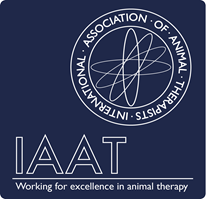Get in touch
07740 741314
houndhelpcare@gmail.com
Amanda Ainsworth
A Brief Look at How We Can Support the Older and/or Arthritic Dog
Osteoarthritis or degenerative joint disease will affect over one million dogs in the UK every year. This deterioration of the cartilage in joints is a progressive and long-term condition leading to inflammation and discomfort in the joints, in severe cases the protective cartilage within the joints becomes so thin that the bones begin to rub against each other, becoming extremely painful.
There are many reasons that dogs develop osteoarthritis including; Age, Obesity, Trauma, Poor Confirmation and the prolonged use of certain medications, however, in the majority of cases osteoarthritis is a secondary condition.
The signs to watch out for that a dog may be beginning to suffer with osteoarthritis rather than ‘just getting older’ include:
- Lameness and/or stiffness during movement, lethargy and unwillingness to exercise
- Swelling and/or heat in the joints
- Struggling to get up, taking extra care when going up or down the stairs, Reluctance to jump i.e. in or out of the car
- Loss of appetite, reactive to touch, muscle atrophy
Whilst osteoarthritis cannot be cured it can be successfully managed for many years, weight control, low impact and regular exercise, supplements (green lip muscle, devils claw, glucosamine, etc.), cartrophen injections, hydrotherapy, laser therapy NSAIDs and opiates and massage will greatly improve the prognosis but more importantly quality of life. It is a combination of these that will enable us to offer dogs a future however it must also be remembered that osteoarthritis is a progressive disease and treatment plans will have to be reviewed regularly.
There are many things we can do around the home to make life easier to negotiate for our arthritic or elderly companions and it is much better to prevent injury where ever possible:

Slippery Surfaces
- put down non-slip
runners and rugs or you could use Anti-Slip Tape (available from www.caninearthritis.co.uk).Ensure
paws are kept clean and hair & nails trimmed, giving your dog better
traction. Don’t engage in play on slippery surfaces
Stairs & Doorways
-
It
may be time to restrict unsupervised use of the stairs, One of the reasons a dog may rush down the
stairs to greet you is more likely to be a lack of strength to control the
decent. Ramps can help with raised
doorways and garden steps.
If your dog has ‘always’ used
a dog flap, consider that this may not be as easy for your
dog anymore.
Beds & Bowls
-
Ensure your dogs bed/beds are not in a
draft and they offer plenty of support but also are big enough to allow your
dog to stretch out. Avoid loose covers and the bed moving, ease of access is
essential.
If your dog shares your sofa
or bed reduce the impact of jumping on and off, lift them,
Provide a step and definitely
don’t let them jump down to a slippery surface.A comfy bed in the car will
help cushion your dog on bumpy roads.Raise food and water bowls
and place a non-slip mat in front.
The
first point of contact if you think your dog is beginning to show signs of
arthritis should always be your vet but there are some great resources
available to help and support you and your dog; visit the CAM (Canine Arthritis
Management) website, www.caninearthritis.co.uk or contact me, I’m happy to
advise what you can do to support your dog through their activities during
daily life and discuss how massage can benefit the older or arthritic dog.


